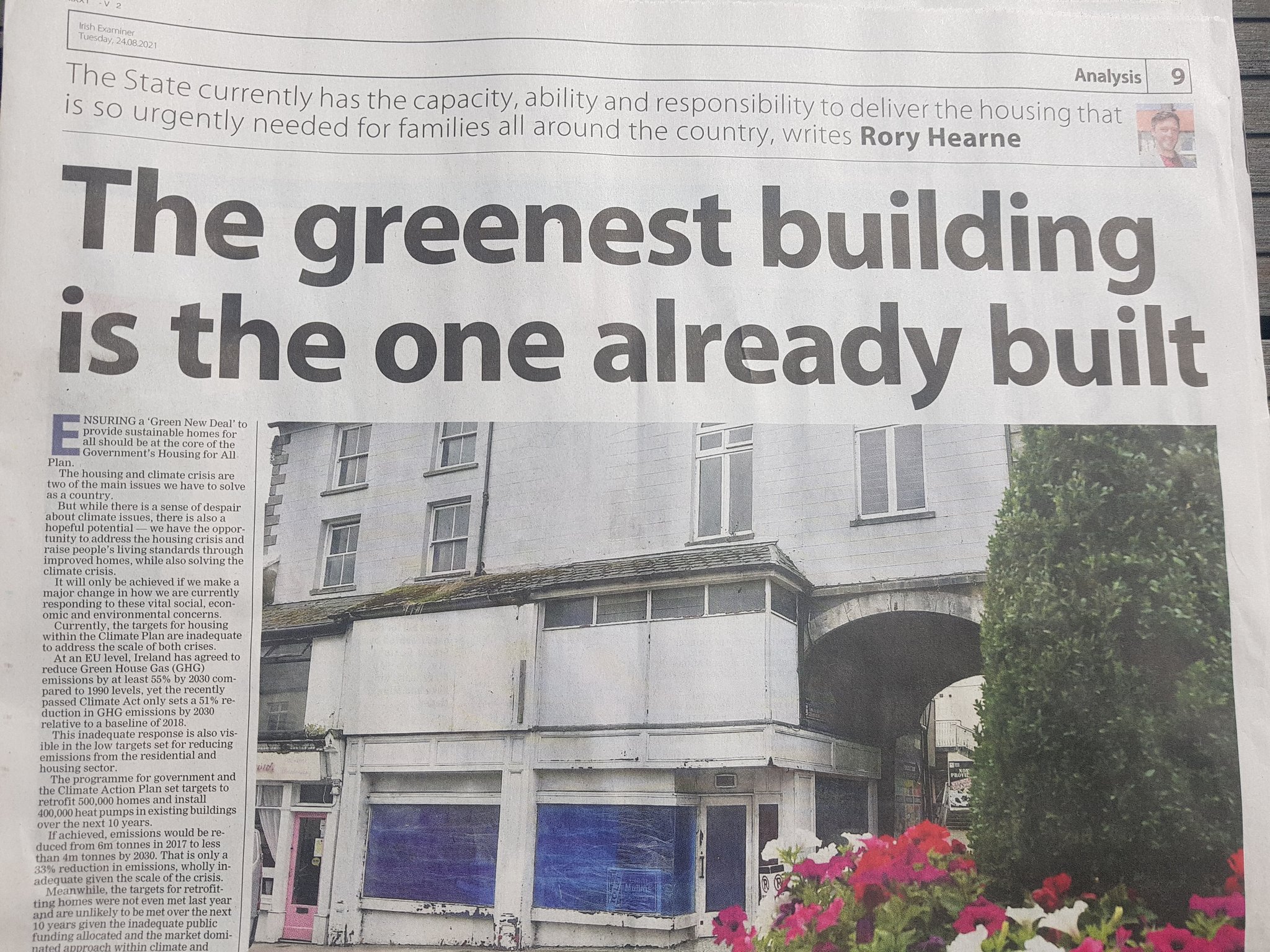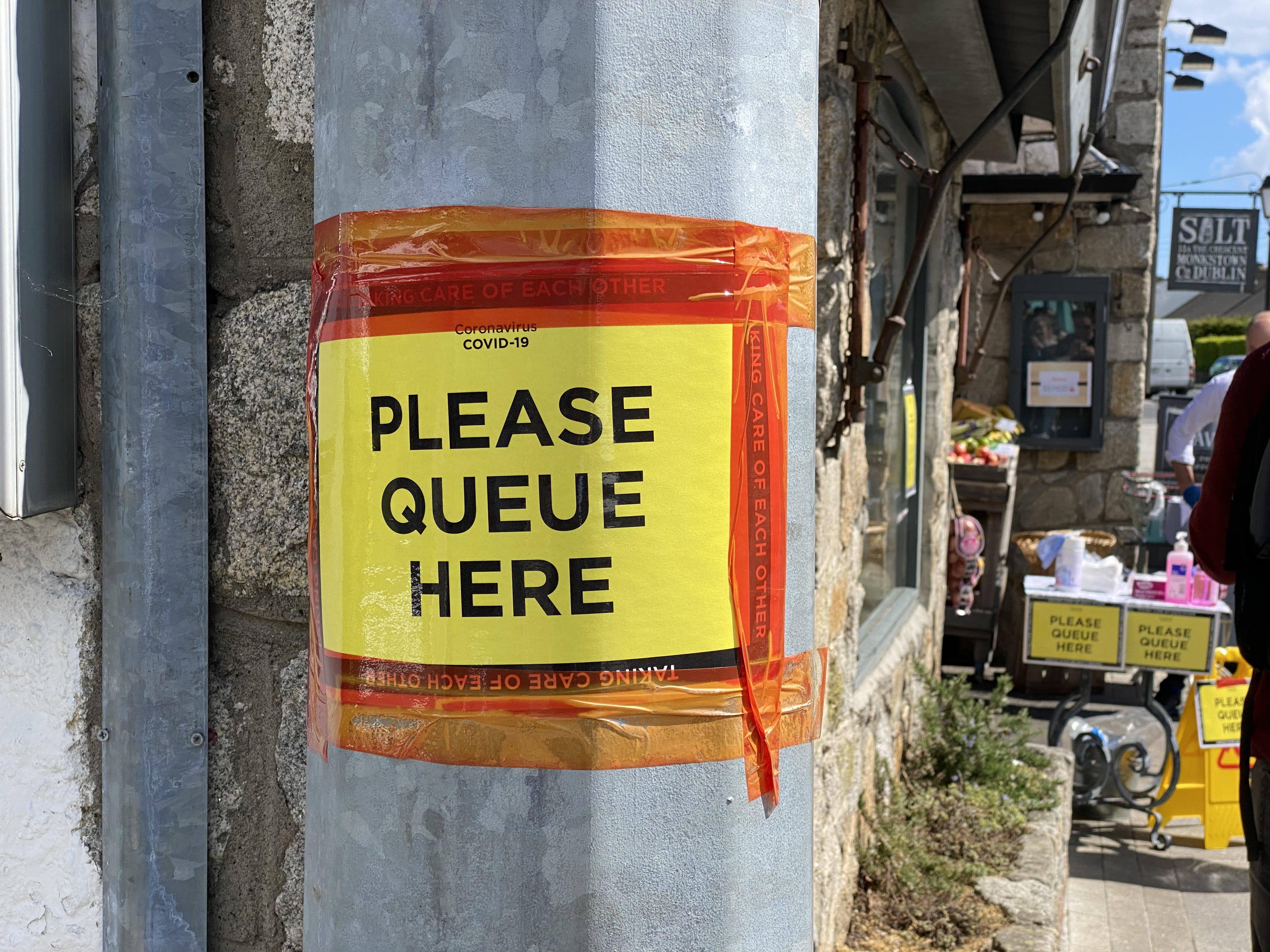Why does planning always fail? This is a question that has preoccupied academics for decades, but rarely reflected upon by practitioners. In the aftermath of the collapse of the Celtic Tiger, we all knew that planning had failed, and spectacularly so. When the bubble burst, Ireland was littered with every manner of idiotic development. The failure was plain for all to see. Yet, unreflective, planners carried on regardless, seemingly determined not to acknowledge what they had been part of.
The usual way planners justify this perennial failure is to claim that it is always someone else’s fault. If only there was more political commitment, more support, better legislation etcetera, things would have been different. Planning must always be good as everyone is generally for it. So, if we just try harder it cannot be anything other, sanctifying the process, regardless of its continuously bad outcomes. This is why planning fails. It simply refuses to learn lessons from experience.
Deregulation Redux
So why does this matter now? It matters because it leaves us blind to what is actually happening in the context of the so called reforms proposed in the Planning & Development Bill 2022. Recall what happened in 2010 after the collapse of the Celtic Tiger. There was a widespread backlash against the deregulatory groupthink that had overrun society. The notion of ‘bad planning’ entered public discourse and there was a determination that the chaotic, developer-led market frenzy must never be allowed happen again.
But they never went away. Slowly over the subsequent years, in tandem with the fire sale of bailed-out development land assets to international capital, the deregulationists stealthily got to work, one by one unpicking measures designed to prevent the mistakes of the past. First to go in 2014 was the 80% windfall tax on profits from the sale of rezoned land, briefly introduced as an anti-speculation measure. Next was the publication of the ill-fated ‘Rebuilding Ireland’ policy with its promise of a ‘root and branch’ review of the planning system. This gave us the disastrous fast-track Strategic Housing Development process written ‘lock, stock and barrel‘ by property industry lobbyists.
The coup de grâce, however, was the introduction in 2018 of Specific Planning Policy Requirements allowing An Bord Pleanála to centrally overrule locally agreed development policies. There had already been a provision in planning law to allow the Minister to do this. But Section 29 of the Planning Act requires the approval of both houses of the Oireachtas. Obviously, such democratic oversight would simply not do, so the law was rewritten to effectively allow the Minister to govern by fiat.
The recommendations of a 2016 independent review to strengthen An Bord Pleanála’s organisation, procedures and resources were subsequently quietly binned. Instead, it was stuffed full of pro-property industry loyalists, including by highly questionable means, and run like a Tammany Hall rubber-stamping machine. The de-democratisation of planning was complete.
The consequences of this heady deregulatory cocktail need little rehearsal here. As I have written before, it metastasized through the planning system like a cancer resulting in a surge of litigation and ultimately to the near total implosion of An Bord Pleanála itself, the resignation of its chairperson and the unprecedented criminal conviction of its deputy chairperson. Planning inspectors spoke of their “anguish” that their professional integrity had been dragged through the mud by “a small number of select individuals”.
And it did not stop there. The malignancy spread through the Irish Planning Institute, the representative body for Irish planners, resulting in a bitter internecine civil war for the very soul of the profession.
Failing Forward
I think it is fair to say that the Irish planning profession has never faced a crisis like this. But fear more! Ever calculating, deregulationists always fail forward, never wasting the opportunity of a crisis (that they themselves created) to continue their ideological crusade.
Ireland does not have a strong tradition of right-leaning think tanks, such as in the UK, but we do have our own coterie of obstreperous anti-planning pseudo-pundits whom, radicalised by market-centric ‘YIMBY’ discourses emanating from pro-investor lobbyists, such as the Centre for Cities, remorselessly push the rhetoric that the root cause of our housing supply crisis must always be planning regulation.
The latest wheeze amongst deregulationists, for example, is that it is Ireland’s ‘UK style discretionary planning system’ that is the problem, pushing instead for ‘by right’ zoning where effectively no development consent would be required at all. Needless to say, the fact that such harebrained proposals stand absolutely no chance of being implemented is beside the point. In true Friedmanian fashion, the objective is not actually to succeed, but to continuously beat the drum that planning regulation must always be to blame. And the best way to keep that idea lying around in the public consciousness is through advancing ever more extreme ultra-libertarian proposals, actually positing them as rational reforms that are both logical and appropriate, and even that they have widespread support.
The primary objective of this relentless campaign is to overwhelm political debates such that anyone who challenges this marketised, supply-side vision can simply be dismissed as a ‘NIMBY’ ‘blocking’ new homes and driving up prices. This, of course, is habitually buttressed by all the usual tired caricatures of planning as a failed top-down socialist, Stalinist or Soviet-style command and control bureaucracy which stifles supply, accompanied by an alarmist invective of an archaic, unreformed ‘regime’ responsible for a whole range of negative social and economic consequences.
These incessant anti-planning barrages ensure that the public gaze is forever averted from the fact that, as has been discussed above, the planning system has already been captured wholesale by these self-same, self-serving deregulatory interests, actually causing the current crisis. The supreme irony here is that, while the government proudly pronounces that the new Planning Bill represents ‘the largest overhaul of the planning system in decades’, the reality is that in recent years it has been subject to a near constant state of restless market-driven radical reforms.
Indeed, it is this perpetual legislative meddling, resulting in increasing complexity, confusion, uncertainty, delays and a constant atmosphere of criticism and crisis, that creates the very conditions that deregulationists thrive upon, fuelling a vicious circle of anti-planning rhetoric and fomenting increasing demands for further liberalised supply-side reforms.
Of course, none of these reforms have ever actually boosted housing supply nor addressed the problem of house price inflation. This is because that is not their purpose. Rather the aim is to turn planning into an accessory of global property market speculation, or what Bradley calls ‘the supply-side of land financialisation’, where capitalising on the land value uplifts achieved through the planning process is a structural imperative.
When these reforms inevitably fail to deliver, rather than questioning their underlying premise, new deregulatory denouncements are made of a planning system ‘not fit for purpose’ which has become deeply ensconced in the national mood. Unfortunately nobody ever asks–whose purpose? And if the system is not fit for purpose–who made it so?
Standing Up
Against the backdrop of this sustained, demoralising scapegoating of planning’s utility, validity and legitimacy, it is little wonder that many planners have become pessimistically resigned to internalising the basic premise that they are in fact the problem. It’s now almost impossible to get a positive message of the value of planning covered in the media. Instead planners must forever be engaged in a desperate rearguard attempt to explain away their failures. And unfortunately there is no shortage of acquisitive accomplices from within the planning profession itself, often employing lofty academic titles to tout their authority, to happily administer the perfidious onslaught.
The problem is that planners have typically not been educated to understand how the urban political economy really works and how the planning system has essentially been co-opted as an instrument of property market growth, displacing it from its long-term public interest goals at the cost of the delivery of affordable new homes. Speaking out is professionally dangerous and those who do often face reprisal (believe me, I know!). As a result, planning has become largely a silenced profession with most practitioners seeing no other option but to obediently toe the line rather than to give voice to their own professional, moral or ethical judgments.
But there are some tentative grounds for hope. A growing coalition of professional, environmental and civil society actors have now mobilised to warn against the government’s proposed Planning Bill. Prior to the former Attorney General going into secret conclave with a select elite advisory group to personally recast the entire planning code, there had been no clamour within the profession for such a radical overhaul. The legislation is not included in the current Programme for Government and no explanatory memorandum has ever been published to explain why the changes are actually needed. As expected, the Planning Advisory Forum, established to provide broad-based consultative input into the legislation, offered a mere legitimating fig leaf and never saw sight nor sound of the draft Bill before it was published.
Naturally, after years of bungled reforms and counter-reforms, some sensible recodification, simplification and consolidation of the legislation is now in order. However, this is not the real intent of the Bill. Nothing in the draft legislation will change the basic fundaments of how the planning system works. Rather, its true purpose is to provide a Trojan Horse for the time-honoured deregulatory obsession with speeding-up consenting timelines and dramatically curtailing public participation, particularly in respect of the bane of the real estate industry–judicial review.
Lest there be any doubt; if this legislation is enacted as currently drafted, it is a recipe for complete chaos. There are simply not enough planning resources to manage such abridged timelines, nor is there likely to be. We need to draw the lessons from the Strategic Housing Development fiasco. Mandatory timelines are a disaster. Despite its perceived complexity, the current legislation is familiar to those operating it and for the most part it works perfectly well. Ripping it up now and starting from scratch will destroy this accumulated institutional knowledge.
Even with the best will in the world, contradictions and omissions will inevitably emerge in the practical operation of the legislation causing ever more conflict, dysfunction and delay. This will be no more so than in relation to the centrepiece of the Bill – the swingeing restrictions to access to justice. At the Oireachtas Pre-Legislative Scrutiny hearings, witness after witness, including seasoned legal experts, implored that upending settled judicial review rules now will result in endless litigation and constitutional challenges. This will invariably involve lengthy references to the European Court of Justice, severely impeding many critical development projects via satellite litigation. Predictably the government will lose, necessitating ever more legislative upheaval.
It is hard to imagine a more gratuitous act of self-harm to achieving our pressing housing, climate and public infrastructure needs than what is being proposed. Secondary regulations will also be required alongside a whole new national planning policy architecture. It could take the best part of a decade to get back on an even keel. Even the property industry, after years of lobbying for the legislation, have now belatedly recognised the danger and called for it to be paused. But this is a battle the government feels ideologically compelled to fight, regardless the consequences. Of course, when it all goes horribly wrong, the planning system will be blamed once more, and the failures used as an excuse to push for even more regressive deregulatory changes.
Somebody needs to shout stop. Our planning system does not require ‘reform’. What we need to do is to stop deforming it! This must begin with a new national conversation that explicitly recognises that the market absolutely cannot deliver the future we need. Instead, we require more planning, more participation, not less, and a paradigmatic shift from a system based on ‘planning for capital’, beholden to developers, to one based on ‘planning for society’ and the people that it is meant to serve.
Gavin Daly





















